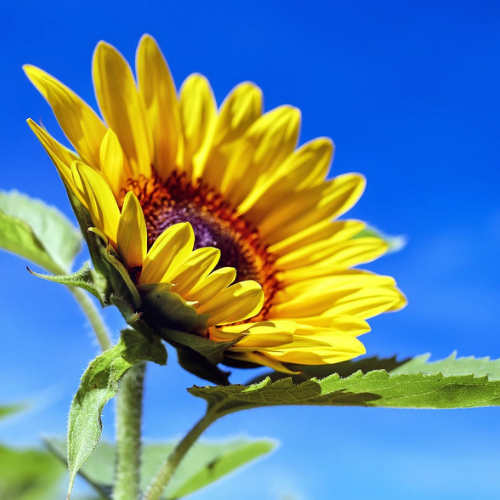Growing sunflowers from seed is a rewarding and relatively simple gardening activity that can bring vibrant beauty to your garden. Sunflowers are not only visually appealing but also attract pollinators and can produce edible seeds. Whether you’re a novice or an experienced gardener, this guide will walk you through the process of planting, caring for, and harvesting sunflowers from seeds.
Why Should You Start Growing Sunflowers from Seed?
Sunflowers are a versatile plant. They thrive in full sunlight and can adapt to various soil types. By growing them from seed, you can enjoy the entire lifecycle of the plant, from sprouting to towering flowers. Sunflowers also support biodiversity by attracting beneficial insects such as bees. For tips on other easy-to-grow plants that pair well with sunflowers, check out this guide to growing mint. Similarly, if you’re interested in adding more fruits or vegetables to your garden, consider growing tomatoes alongside your sunflowers for a varied and productive garden.

Best Time to Plant Sunflower Seeds for Optimal Growth
The best time to plant sunflower seeds is after the last frost in spring or early summer when the soil temperature is between 50-60°F. Sunflowers love warmth, so they thrive when planted in late spring when the soil is adequately warmed up.
How to Prepare Your Garden Bed for Growing Sunflowers
Sunflowers grow best in well-drained, loamy soil. Here are a few steps to prepare your garden bed:
- Clear the area of weeds.
- Add compost or organic matter to enrich the soil.
- Ensure your garden receives plenty of sunlight, at least 6 hours a day.
Planting Sunflower Seeds: Step-by-Step Instructions
Once your soil is prepared, plant sunflower seeds 1-2 inches deep and space them 6-12 inches apart, depending on the variety.
- Water immediately after planting and keep the soil moist until seeds germinate.
- Sunflower seeds usually germinate within 7-10 days.
Caring for Sunflowers as They Grow
Sunflowers require moderate watering once they’re established. Overwatering can cause root rot, so it’s important to allow the soil to dry between watering sessions. Once the plants reach about 2 feet tall, you may need to stake them, especially if you’re growing taller varieties.
Harvesting Sunflower Seeds for Eating or Replanting
Harvesting sunflower seeds can be a rewarding activity, especially if you’re growing edible varieties. Here’s how:
- Wait until the flower heads turn yellow or brown and the seeds harden.
- Cut the sunflower heads and hang them upside down in a dry, well-ventilated area.
- Once dry, rub the seeds from the flower heads and store them in a cool, dry place.
For more detailed instructions on harvesting, you can check out this guide from Gardener’s World.
Conclusion: The Benefits of Growing Sunflowers from Seed
Growing sunflowers from seed is a fun and fruitful gardening activity that adds color, height, and pollinator support to your garden. Whether you are looking to grow them for their edible seeds or as a beautiful addition to your outdoor space, sunflowers are a great choice. For additional plants to grow alongside your sunflowers, consider learning more about companion planting, such as growing mint, or dive into the benefits of tomatoes in a home garden.
